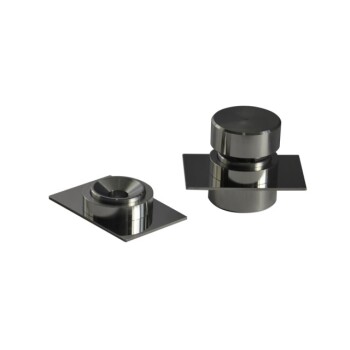X-ray fluorescence (XRF) technology is a powerful analytical method used to determine the elemental composition of various materials.
Portable XRF instruments, such as the XRF Scientific 600M, are particularly popular due to their speed, accuracy, and non-destructive nature.
These instruments can detect a wide range of elements, from light elements like sodium (Na) to heavy elements like uranium (U).
This technology is versatile and finds applications in material science, geology, and various industrial processes.
5 Key Points Explained

1. Detection Range of Elements
XRF instruments can detect elements from sodium (Na) to uranium (U).
This wide range allows for comprehensive analysis of various materials.
Examples of elements that can be detected include Ta, Nb, W, Sn, Ti, V, Cr, Mn, Fe, Co, Ni, Hf, Ta, Re, Cu, Zn, W, Se, Pb, Bi, Zr, Nb, Mo, Al, Pd, Ag, Sn, Sb, and more.
2. Technology and Detection Process
XRF instruments use X-rays to interact with the atoms in a sample, causing them to emit characteristic X-rays.
These emitted X-rays are then detected by the instrument.
The detector processes the secondary X-rays to generate a spectrum, which shows the presence and amount of various elements based on the strength of different peaks.
3. Non-Destructive Nature
XRF analysis does not damage the sample, making it ideal for limited or rare samples.
There is no need for destructive treatment or complex sample preparation.
4. Applications of XRF Technology
XRF provides accurate element content data for materials like metals, alloys, ceramics, and glass, supporting research and development.
It quickly and accurately analyzes the elemental composition of rocks and ores, aiding in understanding the Earth's internal structure and material cycles.
Common uses include scrap sorting, alloy grade identification, quality control in metal manufacturing, geological exploration, testing industrial materials, and ensuring consumer product safety.
5. Considerations for Purchasing XRF Analyzers
Factors such as the detector type (PIN or silicon drift), size, anode target, and accessories affect the cost and performance.
Understanding the specific needs for element detection helps in determining the appropriate budget and selecting the right instrument.
Portable XRF instruments are compact, lightweight, and provide fast analysis, typically taking 15 to 30 seconds per test.
These instruments often come with regular software updates, product training, and excellent user support, enhancing their usability and value.
In summary, XRF technology is a versatile and powerful tool for elemental analysis, offering a wide detection range from sodium (Na) to uranium (U).
Its non-destructive nature and rapid analysis capabilities make it suitable for various applications in material science, geology, and industry.
When selecting an XRF analyzer, considerations such as detector type, performance requirements, and budget are crucial to ensure the best fit for specific needs.
Continue Exploring, Consult Our Experts
Experience the precision and speed of XRF technology with KINTEK SOLUTION's XRF Scientific 600M.
Analyze from sodium to uranium in mere seconds, preserving your samples with our non-destructive methods.
Our versatile instruments are tailored to meet your needs, from research to industrial processes.
Don't miss out on efficiency and accuracy—get in touch with us today to elevate your material science, geology, or industrial endeavors.
Secure your optimal analyzer choice now!











